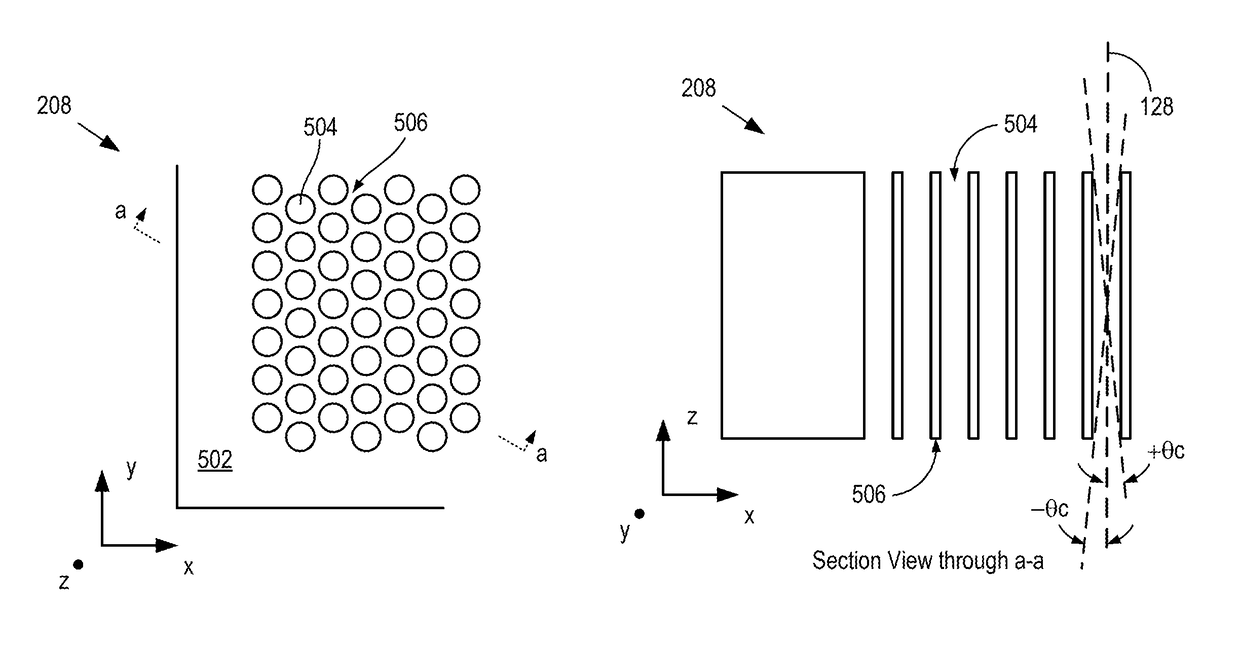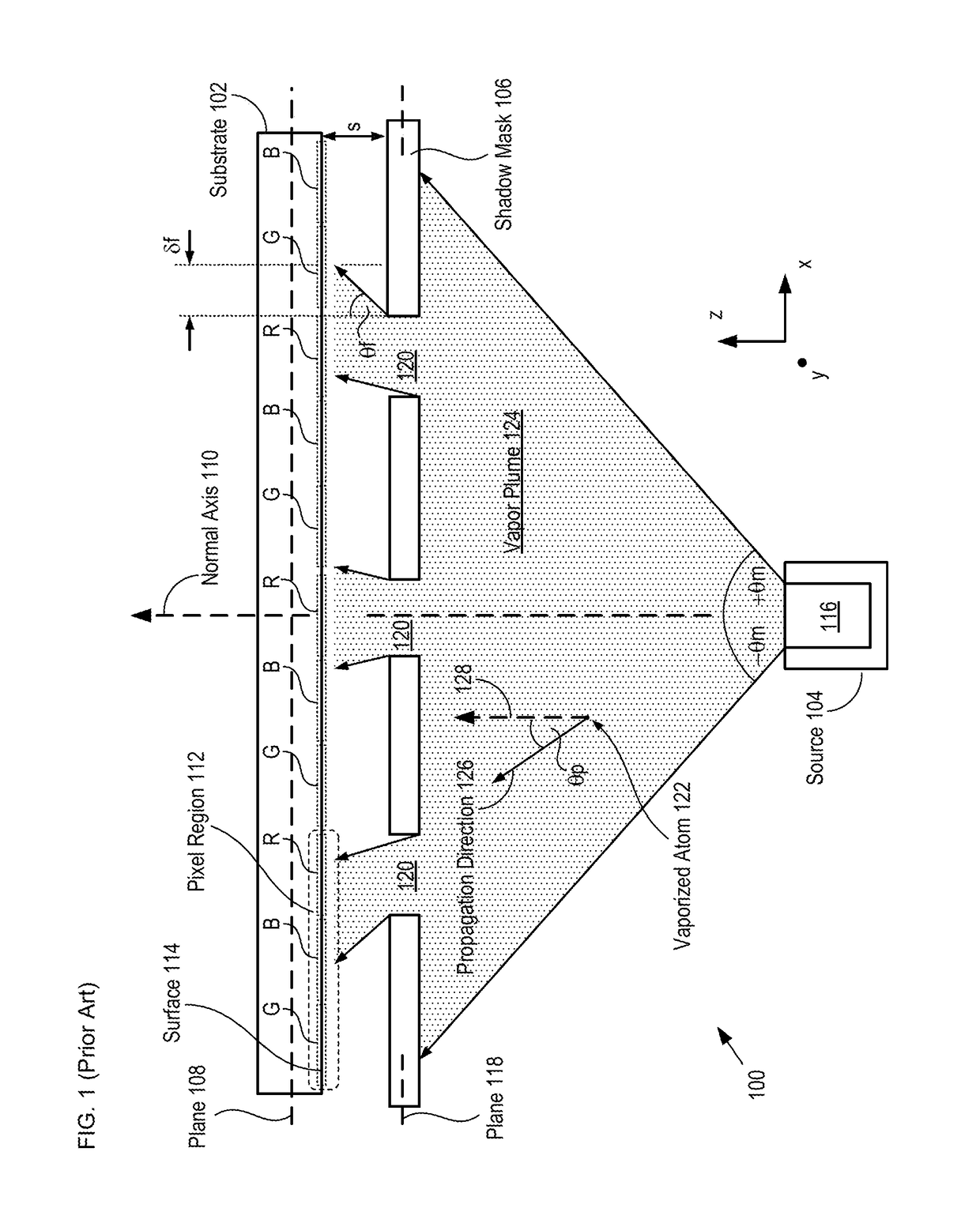High-precision shadow-mask-deposition system and method therefor
a technology of shadow mask and high-precision, applied in the field of evaporation-based thin film deposition, can solve the problems of reducing the amount of handling and additional processing to which the substrate must be subjected, reducing substrate breakage, and increasing fabrication yield
- Summary
- Abstract
- Description
- Claims
- Application Information
AI Technical Summary
Benefits of technology
Problems solved by technology
Method used
Image
Examples
Embodiment Construction
[0026]FIG. 1 depicts a schematic drawing of a cross-section of the salient features of a direct-patterning deposition system in accordance with the prior art. System 100 is a conventional evaporation system that deposits a desired pattern of material on a substrate by evaporating the material through a shadow mask positioned in front of the substrate. System 100 includes source 104 and shadow mask 106, which are arranged within a low-pressure vacuum chamber (not shown).
[0027]Substrate 102 is a glass substrate suitable for the formation of active-matrix organic-light-emitting-diode (AMOLED) displays. Substrate 102 includes surface 114, which defines plane 108 and normal axis 110. Normal axis 110 is orthogonal to plane 108. Surface 114 includes a plurality of deposition sites, G, for receiving material that emits green light, a plurality of deposition sites, B, for receiving material that emits blue light, and a plurality of deposition sites, R, for receiving material that emits red l...
PUM
| Property | Measurement | Unit |
|---|---|---|
| thickness | aaaaa | aaaaa |
| diameter | aaaaa | aaaaa |
| aspect ratio | aaaaa | aaaaa |
Abstract
Description
Claims
Application Information
 Login to View More
Login to View More - R&D
- Intellectual Property
- Life Sciences
- Materials
- Tech Scout
- Unparalleled Data Quality
- Higher Quality Content
- 60% Fewer Hallucinations
Browse by: Latest US Patents, China's latest patents, Technical Efficacy Thesaurus, Application Domain, Technology Topic, Popular Technical Reports.
© 2025 PatSnap. All rights reserved.Legal|Privacy policy|Modern Slavery Act Transparency Statement|Sitemap|About US| Contact US: help@patsnap.com



